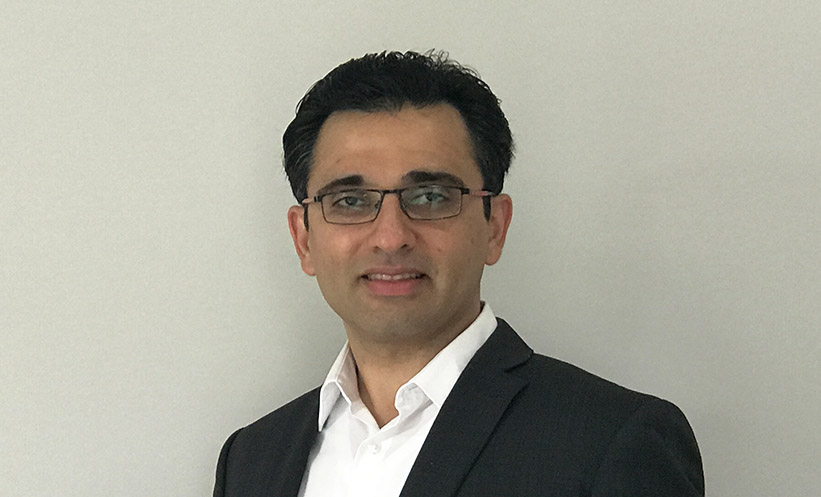Ricky Suchak, Director, Marketing, Commercial Operations at Sandoz
![]()
Interviewed by Louise Rogers | @EMG_GOLD
![]()
Disclaimer: The views and opinions expressed in this interview are those of the interviewee and do not necessarily reflect those of Novartis Pharmaceuticals Corporation or Sandoz Inc. The interviewee declares no potential conflicts of interest with respect to the authorship and/or publication of this interview.
Ricky Suchak is a Director, Marketing at Sandoz, for both retail and institutional product portfolio. Suchak has more than 13 years of progressive experience in commercial operations, marketing, portfolio management, business development & licensing, and product development in both the generic and branded pharmaceutical industry.
We spoke to him about his experience in launching a product in a hypercompetitive market and about his insights into the industry through his various positions held.
Q: You have had an impressive career in the pharma industry, starting off in the research of drug discovery and development, then progressing to portfolio management, and now marketing. What advice would you give to professionals who aspire to go down the same career path?
A: Begin your career in an area that you are passionate about. In R&D I was excited to develop products that could improve patients’ lives. Planning a career change is paramount and one needs to consider the transferable skillsets as well as missing skillsets. In today’s extremely dynamic environment, cross-functional leadership, project management, and communication skills are very important for project success. Pursuing an MBA while working in R&D helped me to develop a strategic mind-set. My prior R&D scientific expertise was also an asset and differentiator, enabling me to evaluate technical aspects for product evaluation, selection, risks, and R&D successes. My advice would be to always attempt to expand your professional network and take active roles at networking events. In addition, always seek to expand your industry knowledge; take additional or stretched assignments that will give you experience in new functional areas you wish to pursue. A career transition decision should start with why you want to move and what you are passionate about. Thereafter, create a transition plan and diligently work towards your goal.
Q: The pharmaceutical landscape in the USA has become very challenging as competition has intensified. How do you use your experience in the industry to analyse market trends and customer behaviour, and subsequently implement the data to prepare for the successful preparation and launch of a new product?
A: With intensified competition, stringent regulatory requirements, and challenging reimbursement from payers, along with the complexity of the supply chain and the need for an innovative marketing strategy, cracking the launch code has become increasingly important for commercial success. Payer, patient, and physician engagement have critical influence over access and reimbursement and hence the success of the product. Social media and digital platforms can help establish relationships with customers and patients. Health Economics Outcome Research (HEOR) is an important tool for validating product value proposition. This helps create a pricing and contracting strategy. It is critical to get pricing right first time, as changing the pricing after launch is a challenge. Understanding the impact of competitive products is important to create successful marketing strategies for launch. Often, products are made from components from different vendors. Supply chain and quality management across different vendors and sites require strong project management for successful launch. Successful launch may not be limited to the above factors; however, the above outlined factors are some of the critical ones.
Q: You were Director of drug portfolio management for 5 years at Sandoz. How should pharma companies go about resource allocation and management and ultimately develop their portfolio strategy to drive future growth of the company and best ensure return-on-investment (ROI)?
A: There needs to be an organisation wide alignment on strategy, driven by executive leadership. Clear alignment on the criteria that determine the ‘right’ project is critical, and these projects should be ones that drive overall value to the company. Portfolio decision making is a dynamic process and companies need a process in place for prioritisation and resource allocation. This should be done on a continuous basis as project dynamics and the external environment are always changing. The critical steps to successful resource allocation decisions are a) database and analytic tools to assess project data, assumed ROI, milestones, and risk assessment; b) financial budgeting/resource management; c) scenario planning and sensitivity analysis; d) alignment with stakeholders; e) senior management endorsement of prioritisation and resource allocation. Portfolio management must create the right processes to quantify and measure risks – a dimension for resource allocation. Risk evaluation too should be a continuous process due to the continuously changing project dynamics and external environment.
Q: What do you think is the current trend companies need to be aware of that will shape the industry in years to come?
A: Data and the digital revolution are creating opportunities to collect, analyse, and strategize data in very different ways. As a result, this could create new technology entrants that engage with patients, consumers, physicians, and payers in radical new ways and create innovative healthcare solutions and products. These players threaten to disintermediate pharma companies as the primary owners of patient data and hence drive the value proposition, which has the potential to impact the pharma business model.
Q: There is pressure on the industry to improve drug quality, without increasing prices. How are you able to increase the value of your products without increasing costs, or relying on volume of sales, to maintain profitability?
A: Product cost and margin are typically a challenge for generics, where margins are often narrow and volatile due to competitive entries. While product cost is critical in maintaining profitability, there should be no compromise in quality. This will eventually and inevitably hurt not only company profitability but also company reputation and, most importantly, compromise patient safety. There should be no compromise on the quality to reduce costs. In fact, a reputation for creative, high-quality products can become a competitive advantage. Apart from quality, customer service and reliability of supply are critical factors than differentiate companies, versus pure price play.
Q: The ROI for R&D has decreased in the last several years. What are some ideas that can increase productivity?
A: Focusing on the following areas could further enhance R&D productivity:
Strategic focussed therapy areas: when a company focusses on a particular therapy area to treat a disease the chances of R&D success are higher.
Systematic approach to productivity improvement: such as functional, organisational, and separate business units could enhance productivity if there is more than one therapy area. Different therapy areas often have unique challenges and requirements; an example of this is gene therapy, which has unique regulatory, operational, and commercial business models. Such areas may be at higher risk due to regulatory challenges, and creating separate business units helps create a focus, thereby managing R&D productivity efficiently. Small companies often excel in speed of R&D development due to their focus and nimble structure.
Advanced analytics/data management: managing data and creating meaningful analysis to drive R&D investment decisions is becoming more critical than ever. Data analytics driven decision making is shaping every decision in pharma R&D, including value-based decisions.
Q: What do you think the key is to successfully manage a large team, yet simultaneously leading innovation and striving for business growth?
A: Building a team with individuals from different cross-functions who embrace innovation is a critical step. Creating a culture for innovation is a key ‘fabric’ that ties the team; this involves encouraging and embracing failure, creating an incentive system to promote innovation, and setting up team processes for innovation. Leadership not only promotes and drives innovation, but also plays has important role to ensure there is balance between innovative (potentially risky projects) and less innovative/less risky projects that balance business needs short and long-term. Leaders not only develop and drive the innovation culture but also balance business goals by carefully driving focus and allocating time and resources across project portfolios.








